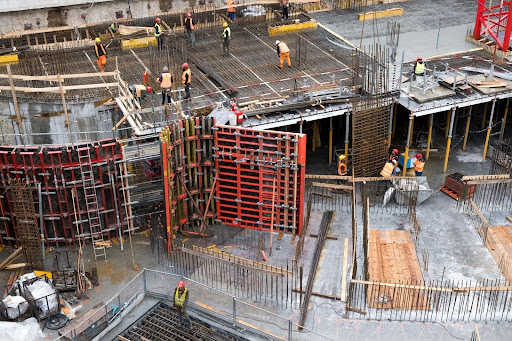The construction industry is constantly evolving, with new technologies and materials driving innovation and efficiency in infrastructure development.
Two areas that have seen significant advancements in recent years are building materials and industrial drilling techniques. In this article, we’ll explore the latest innovations in these fields and their impact on infrastructure development worldwide.
1. Next-Generation Building Materials
Modern construction materials are designed to be stronger, more durable, and more sustainable than ever before.
Recent advancements in building materials have focused on improving performance, reducing environmental impact, and increasing longevity. Here are some notable innovations:
High-Performance Concrete:
High-performance concrete offers superior strength, durability, and resistance to environmental factors such as corrosion and abrasion. Advanced additives and admixtures enhance the performance of concrete, allowing for thinner, lighter, and more resilient structures.
Green Building Materials:
Sustainable building materials such as recycled steel, reclaimed wood, and low-emission concrete are becoming increasingly popular in construction projects.
These materials help reduce carbon emissions, minimize waste, and conserve natural resources, making them an environmentally friendly choice for infrastructure development.
Self-Healing Materials:
Self-healing materials, such as self-healing concrete and asphalt, have the ability to repair cracks and damage autonomously, reducing the need for costly repairs and maintenance.
These materials use innovative technologies such as microcapsules and vascular networks to deliver healing agents to damaged areas.
Nano-engineered Materials:
Nano-engineered materials, such as nanomaterial-reinforced concrete and coatings, offer enhanced strength, durability, and resistance to corrosion and wear.
These materials utilize nanotechnology to improve the performance and longevity of building materials, leading to more resilient and sustainable infrastructure.
2. Advanced Drilling Techniques
Industrialized drilling plays a crucial role in various industries, including oil and gas exploration, mining, construction, and geotechnical engineering.
Recent advancements in industrialized drilling techniques have focused on improving efficiency, precision, and safety. Here are some notable innovations:
Directional Drilling:
Directional drilling techniques allow for the drilling of wells and boreholes at angles and depths that were previously inaccessible. This technology is widely used in oil and gas exploration, geothermal energy production, and underground utility installation.
Horizontal Drilling:
Horizontal drilling involves drilling wells and boreholes horizontally instead of vertically, allowing for increased access to underground resources and improved reservoir drainage. This technique is commonly used in oil and gas production, as well as in environmental remediation and groundwater monitoring.
Rotary Steerable Systems:
Rotary steerable systems (RSS) use advanced drilling technologies to steer the drill bit in real-time, allowing for precise control of the drilling direction and trajectory. This technology improves drilling efficiency, reduces drilling time, and minimizes environmental impact.
Automated Drilling Systems:
Automated drilling systems use robotics, sensors, and artificial intelligence to automate drilling operations and optimize drilling performance. These systems reduce the need for human intervention, improve safety, and increase productivity in drilling operations.
Conclusion
The latest advancements in building materials and industrialized drilling techniques are driving innovation and efficiency in infrastructure development worldwide.
By utilizing next-generation materials and cutting-edge drilling technologies, the construction industry can build stronger, more resilient, and more sustainable infrastructure to meet the needs of a rapidly growing global population.

